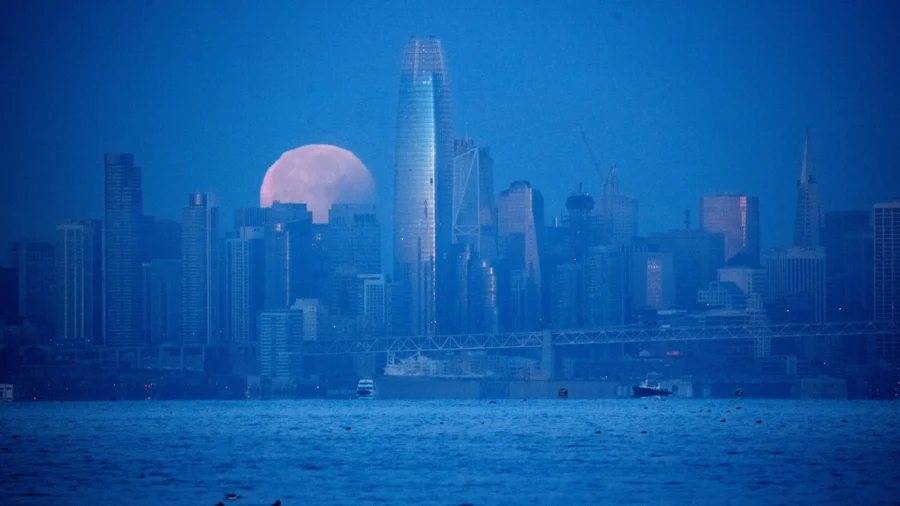The night of Aug. 19 will offer a rare sight for skywatchers, as a very rare full moon will be visible in the sky.
This particular full moon has been dubbed a “super blue moon” as both a supermoon and a blue moon. The spectacle is not likely to happen again for several years.
According to Noah Petro, a scientist with the Lunar Reconnaissance Orbiter project at NASA, it is a rare combination, which “occurs when the different cycles of blue and supermoons happen to align on the calendar.”
Here’s what will make this particular moon so special.
A closer-than-usual moon orbit means it is closer to the Earth. When the moon is orbiting at its closest to the earth, its full moon is known as a supermoon, as dubbed by astrologer Richard Nolle who coined the term 45 years ago in 1979.
When closest to the Earth, the moon appears at its largest and brightest. This occurs at a distance of around 226,000 miles from Earth at the closest point of the moon’s elliptical orbit.
“Different publications use slightly different thresholds for deciding when a full moon is close enough to the Earth to qualify as a supermoon,” according to NASA. “Because the orbit of the moon is not a perfect circle, the moon is sometimes closer to the Earth than at other times during its orbit.”
The brightness of a supermoon is approximately 30 percent more than that of a regular moon, and it’s around 14 percent larger.
While we saw such a supermoon last year, Monday night’s supermoon will be extra rare as it will also be a blue moon.
Once in a Blue Moon
And what is a blue moon?
A blue moon isn’t actually blue in color. It is the rare occasion when a full moon appears more than once in a certain period of time as outlined by the Gregorian calendar.
There is a seasonal blue moon, which has a longer history, and since the 1940s what is known as a calendar blue moon.
Monday’s super blue moon falls in the more traditional seasonal definition of a blue moon, being the third full moon of a season with four full moons.
Usually, there are only three full moons in one season with three months. The rare appearance of an extra full moon in the season was called a “blue moon.”
The other type—the calendar blue moon which emerged from a misinterpretation of the traditional blue moon—refers to when there is a second full moon in a single calendar month.
As a full moon appears every 29.5 days, this can lead to periods in the Gregorian calendar where there is an extra full moon in a month or season, as many months have 30 or 31 days. Consequently, one extra full moon in either a season or a month is known as a blue moon.
According to NASA, blue moons occur on average every two or three years, while super blue moons are even rarer, to be seen on average only once every 10 years.
NASA says the next super blue moon is not expected until January 2037.

